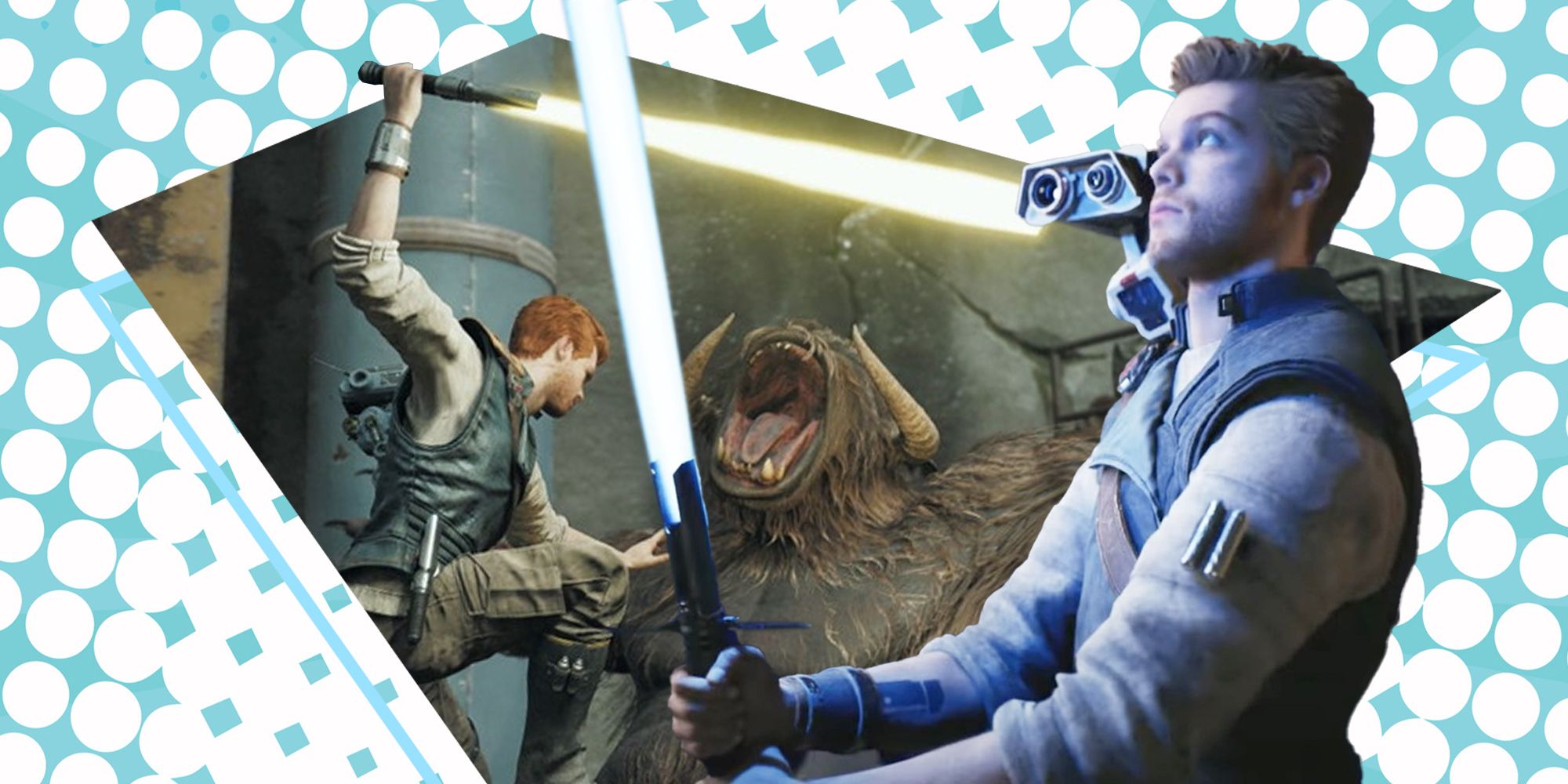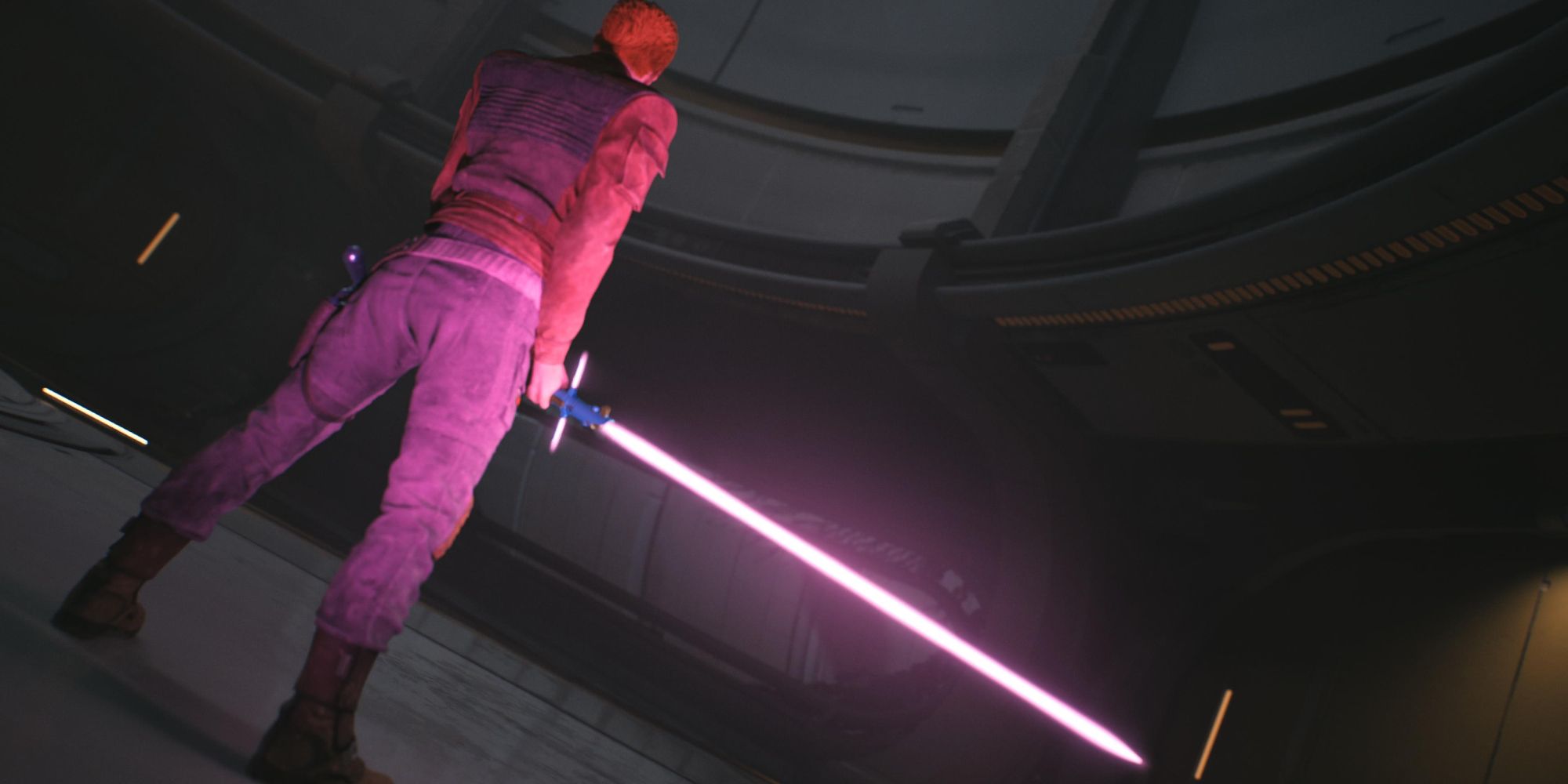I recently wrote about how Star Wars Jedi: Survivor’s sheer wealth of customisation options feeds into the player experience by making you feel like you’re making a Cal unique to your own preferences. I dress up my Cal, and to some small degree, his character is impacted by my choices. What I didn’t mention is that the stances you use feed into this too, the five stances you choose from all giving Cal a different kind of physicality. It also helps to switch things up against different opponents, though you’ll likely find yourself defaulting to a few stances just because they suit how you like playing best and which ones you want to pump upgrades into.
For example, I used mostly the blaster stance and dual-wield lightsabers. Using my blaster would allow me to pick off weaker enemies from a distance so I wouldn’t have to constantly parry blaster bolts while facing tougher enemies, and it also helped me wear down bosses with more powerful shots while keeping my distance from their unavoidable attacks. It also looked extremely cool.
The dual-wield lightsabers suited me especially well – they’re energetic and very quick, so I could leap in, get a few good strong slashes in, and dodge back out before they could do any damage. I particularly liked that the dual-wield force attack lets you automatically parry attacks, which rewards deliberate movement though it takes a while to initiate. I can take time to memorise an opponent’s attack pattern, find a gap in which to use my force move and hit my opponent with a flurry of punishing parries.
However, I’ve been watching my partner play the game since I finished it a few days ago, and his playstyle is completely different. I polled him on his favourite stances, and his ranking was the opposite of mine. He preferred the single-bladed lightsaber for balance and ease of use, saying that it was versatile enough to use in most enemy encounters and that he didn’t have to think as hard about switching stances. He also liked the double-bladed lightsaber because he tends to play defensively, and likes to use a more mobile stance. Plus, you can easily deflect those machine gun blaster bolts. I get that it’s great for groups of enemies, but I still found myself getting overwhelmed quickly later in the game, especially when there were multiple strong robots attacking me at a time.
The last stance is the crossguard stance, which I didn’t use at all. I unlocked it, tried it on one Bedlam Raider, and decided it wasn’t for me. The crossguard is very slow, but it does an incredible amount of damage and soaks up a surprising number of hits without depleting your stamina as much. If you’re patient and time your attacks right, you can kill enemies in a single huge swing, but the time it takes for your lightsaber to connect leaves you open to getting hit. I am not a patient person, but if a gigantic, heavy lightsaber suits you, have at it. I’ve seen people on Twitter be very excited about it, and it definitely feels satisfying to kill an enemy with a single well-timed whack, it just didn’t click with me.
I love that Jedi: Survivor has so many stances for so many different kinds of players – it shows a consideration for different play styles, though it doesn’t corrupt the Jedi power fantasy while doing so. My Cal is fast, strong and is dressed like a Gen Z fuckboy, and I love him for that. My partner’s Cal is mobile, traditional and dressed like Cassian Andor, and I love him for that too. The game molds itself to you like you mold yourself to it, and that’s pretty cool.



